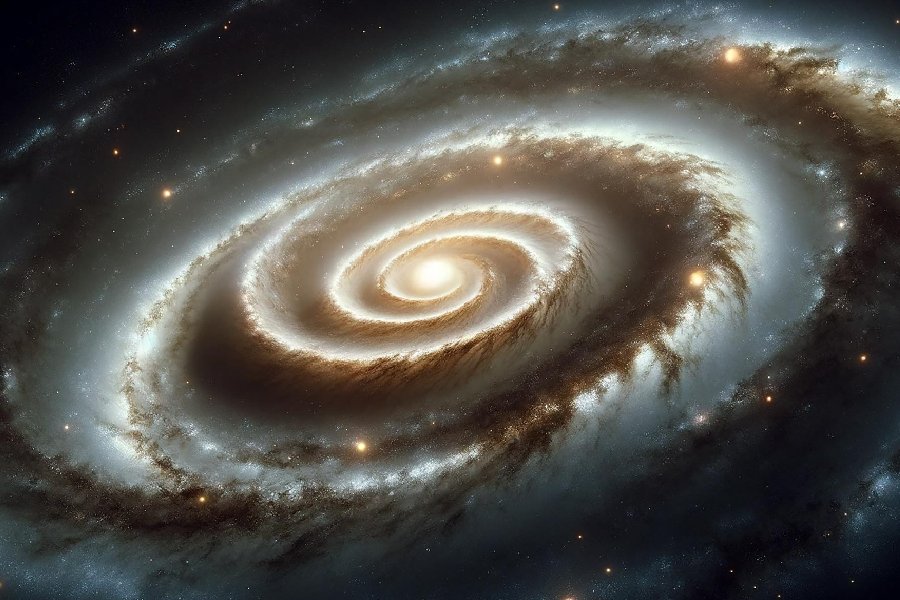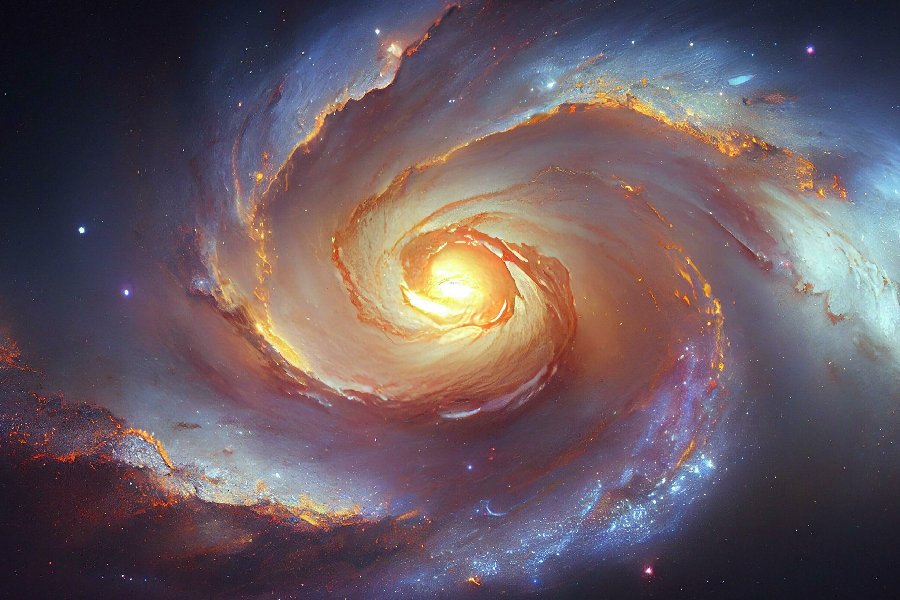As we trace the outlines of celestial figures, we glimpse into the worlds both familiar and strange. One of the most striking and recognizable formations are the spiral galaxies, those magnificent systems of stars and gas that display signature pinwheel structures. But what is a spiral galaxy, and what accounts for its distinct shape?
First, we will look at the characteristic features that identify a spiral galaxy and distinguish it from other galactic types, like ellipticals and irregulars. Next, we will examine the components that make up their swirling disks, bulges, and arms.
We will also learn how active star formation propagates through spiral arms and what gives rise to differential rotation speeds. Finally, we will touch on the prevalence of spiral galaxies like our own Milky Way in the observable universe.
Our goal is to illuminate what defines these rotational stellar systems and what accounts for their iconic spiraled structure. Join us as we uncover the essence of spiral galaxies! By the end, you will have a better grasp of the nature of these celestial pinwheels.
What Is A Spiral Galaxy?
A spiral galaxy, as the name implies, has a spiral galaxy shape characterized by its distinctive spiral arms, which radiate outward from a central nucleus. These arms contain a concentration of stars, gas, and dust, creating a visually striking pattern.
Spiral galaxies are divided into two main subtypes: barred and unbarred, depending on the presence of a central bar-shaped structure. The Milky Way, our own galaxy, is a barred spiral galaxy.
Spiral galaxies are known for their ongoing star formation in the spiral arms, giving them a dynamic and active appearance. They represent a common and diverse category of galaxies in the vast universe.

The Visual Spectacle: Anatomy of a Spiral Galaxy
Spiral galaxies are defined by their prominent curved arms that extend outwards from a bright, bulbous core region. These graceful arms rotate around the galactic center and are areas of active star formation fueled by dense interstellar gas.
Variations in spiral galaxies
Roughly two-thirds of spiral galaxies contain a bar-like linear structure composed of stars and gas cutting through their central bulge.
These barred spiral galaxies contrast with unbarred spirals that lack this distinctive central bar and instead have spiral arms that join directly to the bulge.
What gives rise to the spiral structure
Density wave model
The leading explanation for the emergence of spiral arms is the density wave model. This posits that the arms are created by gravitational interactions and orbital resonances that produce areas of higher density.
Star formation propagation
The formation of massive, blue stars within the arms triggers further star birth nearby. This propagates star formation through the arm. Shock waves from supernovae and stellar winds also help compress gas clouds, initiating new star formation.
Our Galactic Home: The Milky Way
The Milky Way as a barred spiral galaxy
Based on substantial observational evidence, astronomers have empirically classified the Milky Way as a barred spiral galaxy. It exhibits prominent spiral arms detected through mapping of gas/dust concentrations as well as young, hot star formations fueled by those molecular clouds.
Quantitative modeling of gravitational dynamics near the galactic center indicates the presence of a central bar structure approximately 27,000 light-years in length. This is further supported by infrared observations of the galactic bulge.
Understanding our galactic home
Being embedded within the disk of the Milky Way inherently makes it challenging to directly survey and map our galaxy’s form. However, techniques like astrometry and Doppler shift spectroscopy have enabled astronomers to piece together quantitative models of our spiral galaxy’s components.
For example, the extensive Gaia star survey provides precise 3D stellar maps charting the Milky Way’s spiral arms based on accurate distances and motions of observed stars, also revealing our galaxy’s overall rotation.

Cosmic Dance: Dynamics of Spiral Arms
Star formation in spiral arms
Spiral arms host areas known as stellar nurseries where the conditions are ripe for star formation. Within these dense clouds of molecular gas and dust, gravity causes the materials to clump and condense, eventually leading to the ignition of new stars.
As the spiral arms rotate through the galaxy over millions of years, the interstellar gasses become compressed, increasing the overall density. This compression triggers the collapse of the molecular clouds, setting off episodes of active stellar birth.
Role of gas and dust
The gasses and cosmic dust that reside predominantly within the spiral arms provide the essential raw materials for star formation across the galaxy. Great hydrogen clouds span through the arms, and when pockets of gas gain enough mass, gravity takes over to initiate stellar birth.
Not only hydrogen but heavier elements as well are incorporated into new stars as well. Overall, there is a continuous cycling of the gas and dust components through the structure of the arms over time.
Cosmic Time Capsule: Spiral Galaxies and Galactic Evolution
The evolutionary journey of spiral galaxies
Spiral galaxies originate from great clouds of gas that congealed in the early universe after the Big Bang. Over billions of years, these primitive clouds collapsed under gravity and slowly began to form structure and rotate.
Disturbances triggered the development of rugged arm patterns that eventually organized into the grand pinwheel structures we see today.
The arms and bars of spiral galaxies continue to morph and change shapes even now. Collisions between spirals can also dramatically transform their structures, with two spirals sometimes merging into one larger elliptical galaxy.
Insights into the Cosmic Timeline
We can gauge the age and generations of stars within a spiral galaxy based on qualities like their color and metal content. Older stars shine red, while younger stars take on a bluer hue.
The debris thrown out by supernovae explosions increases the metallicity of interstellar gas over time. So stars formed after a supernova contain higher metal content, helping date later stellar generations.
Conclusion
The intricate beauty and cosmic significance of spiral galaxies unfold as we delve into their captivating mysteries. So, what can we conclude from this? What is a spiral galaxy? This galaxy consists of a flat, rotating disk, stars, gas and dust, and a central concentration of stars moving in a spiral. Through this celestial journey, we hope you have realized that these cosmic tapestries, with their spiral arms and stellar nurseries, are not just distant wonders but integral pieces of our cosmic story.
